In the quest for superior crop health and productivity, the aboveground part of the plant represents only half of the battle. The other half happens below the soil or substrate level, as the roots work to exchange gases, various compounds and water. Plantlogic’s focus is on roots, as it specializes in the design and manufacture of innovative horticultural pots, all striving for optimal drainage and oxygenation in the root zone.
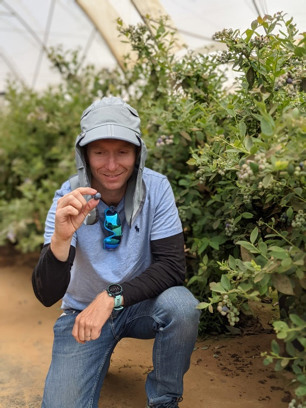 Why do proper drainage and oxygenation matter?
Why do proper drainage and oxygenation matter?
According to Christian Howarth, Chief Sales Officer at Plantlogic (photo right)
Achieving proper drainage and oxygenation in the root zone allows the grower to both improve plant health and reduce the environmental impact. During photorespiration, the respiration rate is seven times higher in roots than in any part of the plants, explains Christian, so it is important to effectively move transpired water out of the root zone and to enable oxygen uptake by the roots. Proper drainage is also key to reducing phytosanitary problems in the rhizosphere, which reduces the need for pesticides and other agrochemicals.
Moreover, proper drainage improves water and nutrient use efficiency. When a horticultural substrate is saturated, root development is restricted, and the electrical conductivity of the root zone exceeds healthy levels. A saturated substrate also restricts gas exchange at the root level, thereby reducing the photosynthetic rate and limiting nutrient absorption. Root permeability is also lower under improper drainage. Altogether, these effects of improper drainage cause a hormonal imbalance and leaf wilting, says Christian.
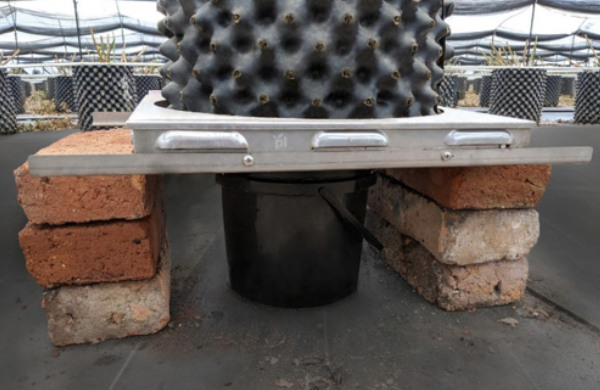 Drainage flow directly into closed container to provide accurate and clean drainage samples for measuring drainage volume, pH and EC
Drainage flow directly into closed container to provide accurate and clean drainage samples for measuring drainage volume, pH and EC
So, what does proper drainage look like?
According to Christian, growers should use a growing media with a 10% drainage rate. Another rule of thumb is that the conductivity of the leachate should be 50% higher than in the feed conductivity. Having too high of conductivity suggests that the drainage volume is too low as the leached nutrient solution is very concentrated. Similarly, a low conductivity may indicate either that the plant is not receiving enough nutrients (i.e., has absorbed everything in the solution) or that drainage is excessive. While oxygen uptake varies between species, research has stated that oxygen consumption by root tips varies from 14 to 20 mg oxygen/m/d.
According to Christian, “the drainage design of Plantlogic pots position all of the roots to receive all of the oxygen that they would ever need while balancing moisture retention. Our pots become an essential support system to the plants”.
Taking the example of blueberry production, Christian explained that it is recommended to use 25L pots with legs to keep the substrate and ground separated, allowing for better drainage and oxygenation uptake directly at the root mass.”
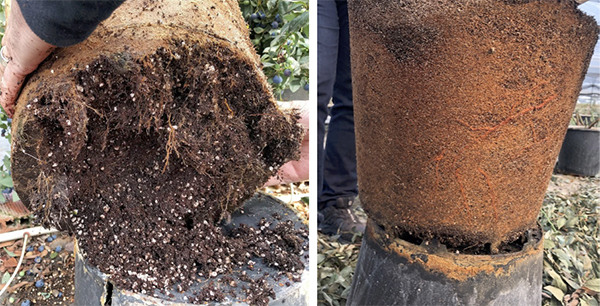 "An example of why drainage and oxygen uptake are so important. Plantlogic's patented design keeps the center of the root mass full of oxygen and drainage on the edges with a minimal wet zone," says Christian. "Drainage has been optimized in our pots that results in consistent and uniform rootzone conditions."
"An example of why drainage and oxygen uptake are so important. Plantlogic's patented design keeps the center of the root mass full of oxygen and drainage on the edges with a minimal wet zone," says Christian. "Drainage has been optimized in our pots that results in consistent and uniform rootzone conditions."
Plantlogic’s emphasis on drainage and oxygenation
Plantlogic has released numerous designs for specific crops, all aimed at achieving proper drainage and oxygenation. Examples include our newest pot, the Zephyr V2. we believe that the Zephyr has the highest legs, widest base, more oxygen uptake of any product in the world now.
According to Christian, Plantlogic has always and will continue to pride itself on innovative designs in response to growers’ needs.
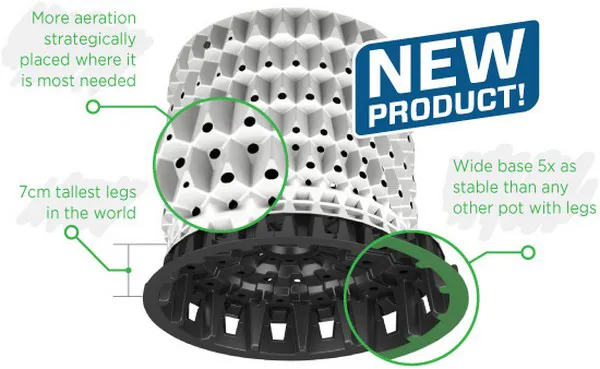
“When customers purchase our products, we give them piece of mind knowing that they will receive the highest quality products to make their upcoming planting season a success. We are able to achieve this promise due in part to our obsession with innovation and delivering excellent customer service,” says Christian.
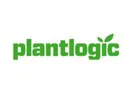
For more information:
Plantlogic
sales@getplantlogic.com
www.getplantlogic.com
